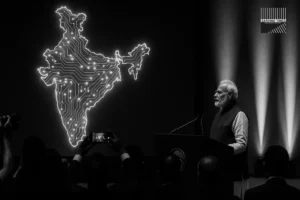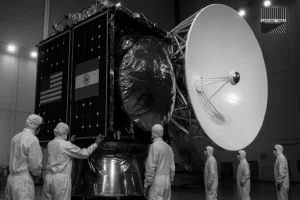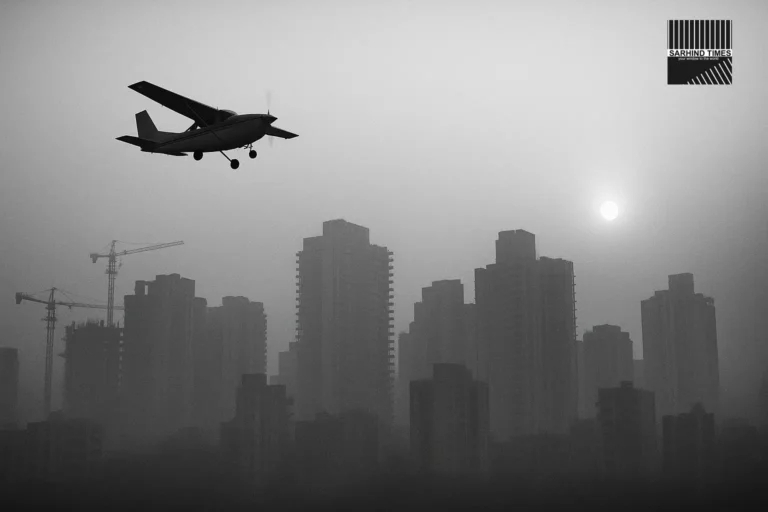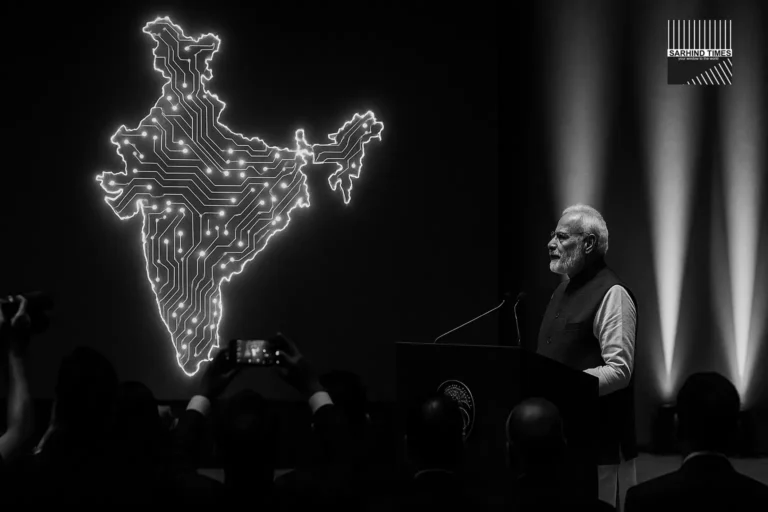ISRO says core human-spaceflight systems are about 90% ready; three uncrewed flights will validate life-support, re-entry, and splash-down ahead of a targeted 2027 crewed launch.
In a major technological leap for the nation, the Indian Space Research Organisation (ISRO) announced that its human-spaceflight programme, designated Gaganyaan, has now completed approximately 90 percent of its core systems and is rapidly moving toward a series of uncrewed test missions ahead of the targeted crewed launch in 2027.
Mission Status: From Design To Execution
The announcement comes from ISRO leadership, which detailed that the programme has finalised the bulk of its design, manufacturing, and qualification phases for the crew module, service module, launch vehicle integration, and ground-support infrastructure. According to programme insiders, the next steps include three uncrewed flights — one carrying the humanoid robot “Vyommitra” inside the crew module — to validate life-support systems, re-entry aerothermodynamics, splash-down procedures, and mission control readiness.
Experts say the 90 percent completion estimate signals a decisive transition into the “mission-execution” phase, where integration tests, anomaly resolution, and safety protocols dominate the schedule. The uncrewed missions are planned before crew training and final selection culminate in a targeted 2027 crewed launch.
“The hardest part is not designing the system, but ensuring it runs flawlessly in extreme conditions — vacuum, heat-shield aerodynamics, and splash-down in variable sea states.” — Former ISRO scientist
Launch Vehicle: LVM3 As The Human-Rated Workhorse
The LVM3 (formerly GSLV Mk III) heavy-lift rocket is earmarked as the human-rated launcher for Gaganyaan. Its performance envelope enables placement of heavier payloads to low-Earth orbit and supports redundant safety margins crucial for crewed missions. Human-rating activities include upgrades to avionics reliability, structural factors of safety, engine health monitoring, and fault-tolerant guidance.
- Core stages: Solid booster pair, liquid core stage, cryogenic upper stage.
- Human-rating: Enhanced quality assurance, redundant sensors, and abort integration.
- Range readiness: Upgraded tracking, telemetry, and health monitoring at ground stations.
Systems Maturity: What The 90% Figure Covers
ISRO officials indicate that key subsystems have crossed design freeze and completed qualification testing, with production lots in various stages of delivery. Ground infrastructure has been refurbished to support abort tests, recovery rehearsals, and integrated countdown simulations.
| Subsystem | Readiness | Next Gate |
|---|---|---|
| Crew Module | Structure, avionics, ECLSS benches qualified | Integrated pressure and leak tests, cabin environment runs |
| Service Module | Propulsion clusters hot-tested; power and thermal loops validated | Long-duration duty-cycle tests and integrated power-on |
| Crew Escape System | Static fire and pad abort heritage leveraged | Ascent abort demonstration with instrumented dummy module |
| Re-entry & Recovery | Heat shield tiles and parachute stacks qualified | Sea trials with Navy; splash-down rehearsals |
Validation Flights: Step-By-Step Risk Retirement
Three uncrewed missions are planned to retire operational risk. One flight will host “Vyommitra” to test environmental control and life-support in flight-like conditions. Across these sorties, ISRO will validate fault detection, isolation and recovery (FDIR), crew escape logic, and autonomous guidance during contingency scenarios. Telemetry, tracking, and command links will be exercised to mission duration with simulated off-nominal events.
- Flight 1: Avionics and ECLSS checkout; stable orbit insertion and de-orbit burn.
- Flight 2: Re-entry heating envelope, parachute staging, and splash-down recovery.
- Flight 3: Integrated end-to-end rehearsal with Vyommitra and upgraded software stack.
National Strategy: Why Human Spaceflight Now
Gaganyaan aligns with India’s “Atmanirbhar” vision, aiming to secure critical technologies, deepen the high-value manufacturing base, and spur a domestic space-ecosystem that includes private satellite operators, launch services, and downstream application firms. The mission carries scientific, strategic, and economic benefits that extend beyond the immediate flight objectives.
“We are not only building a spacecraft; we are building capability — suppliers, standards, and skills that will compound for a generation.” — Senior programme engineer
Economic And Industry Impact
Industry analysts expect a catalytic effect across materials engineering, avionics, precision machining, composites, and software verification. Spillovers into medical devices, thermal management, and autonomous systems are also anticipated. Policy momentum around space-sector liberalisation and in-orbit services could accelerate venture formation and global partnerships.
- Private participation: Tier-2 and Tier-3 suppliers on-ramping to aerospace quality.
- Exports: Opportunity in components, testing services, and small-sat rideshare.
- Jobs and skills: New roles in verification, safety, and mission operations.
International Partnerships And Experiments
India is exploring arrangements with partners including Australia and France for microgravity research, tracking support, and commercial launch opportunities. International collaboration can diversify risk, enrich the experiment manifest, and strengthen India’s role in a multipolar space economy.
STEM, Society, And The Talent Pipeline
Beyond engineering, Gaganyaan has a powerful societal dimension. STEM education initiatives, student cube-sat programmes, and regional aerospace manufacturing hubs are expected to receive fresh impetus. The mission signals India’s readiness to transcend satellite launches and step into human spaceflight — a milestone with profound cultural and educational resonance.
Programme Timeline
| Phase | Date/Year | Milestone |
|---|---|---|
| I | 2024–2025 | Design freeze and qualification: crew module, service module, LVM3 human-rating tasks, ground infra upgrades. |
| II | 2026 | Three uncrewed validation flights, including Vyommitra mission; recovery and systems maturation. |
| III | 2027 | Targeted crewed launch following training, selection, and final readiness reviews. |
Key Risks And Mitigations
Human spaceflight demands rigorous margins across propulsion, thermal protection, guidance, and fault tolerance. ISRO’s test plan emphasizes incremental risk retirement with abort demonstrations, redundancy audits, and independent verification and validation (IV&V) of flight software.
- Thermal and structural loads: Expanded wind-tunnel and arc-jet testing matrices.
- Parachute and splash-down: Multi-canopy sequencing and sea-state rehearsals with Navy support.
- Avionics reliability: Dual-redundant sensors, watchdog timers, and real-time health telemetry.
- Operations: Crew training in simulators, off-nominal drills, and medical readiness protocols.
What Happens Next
Near-term milestones include full-duration hot-fires, stacked vehicle checks, and countdown simulations. Results from the uncrewed flights will inform final software loads and crew procedures. Following crew selection and advanced training, India aims to join the small cohort of nations with independent human spaceflight capability.
Conclusion: A New Chapter For India In Space
Gaganyaan’s progress marks a pivotal threshold: from a design-led push to a flight-test campaign that will define India’s human spaceflight credentials. With 90 percent of core systems reportedly complete and validation flights in sight, the programme is poised to deliver scientific, strategic, and societal returns that extend well beyond the first crewed mission.





















+ There are no comments
Add yours